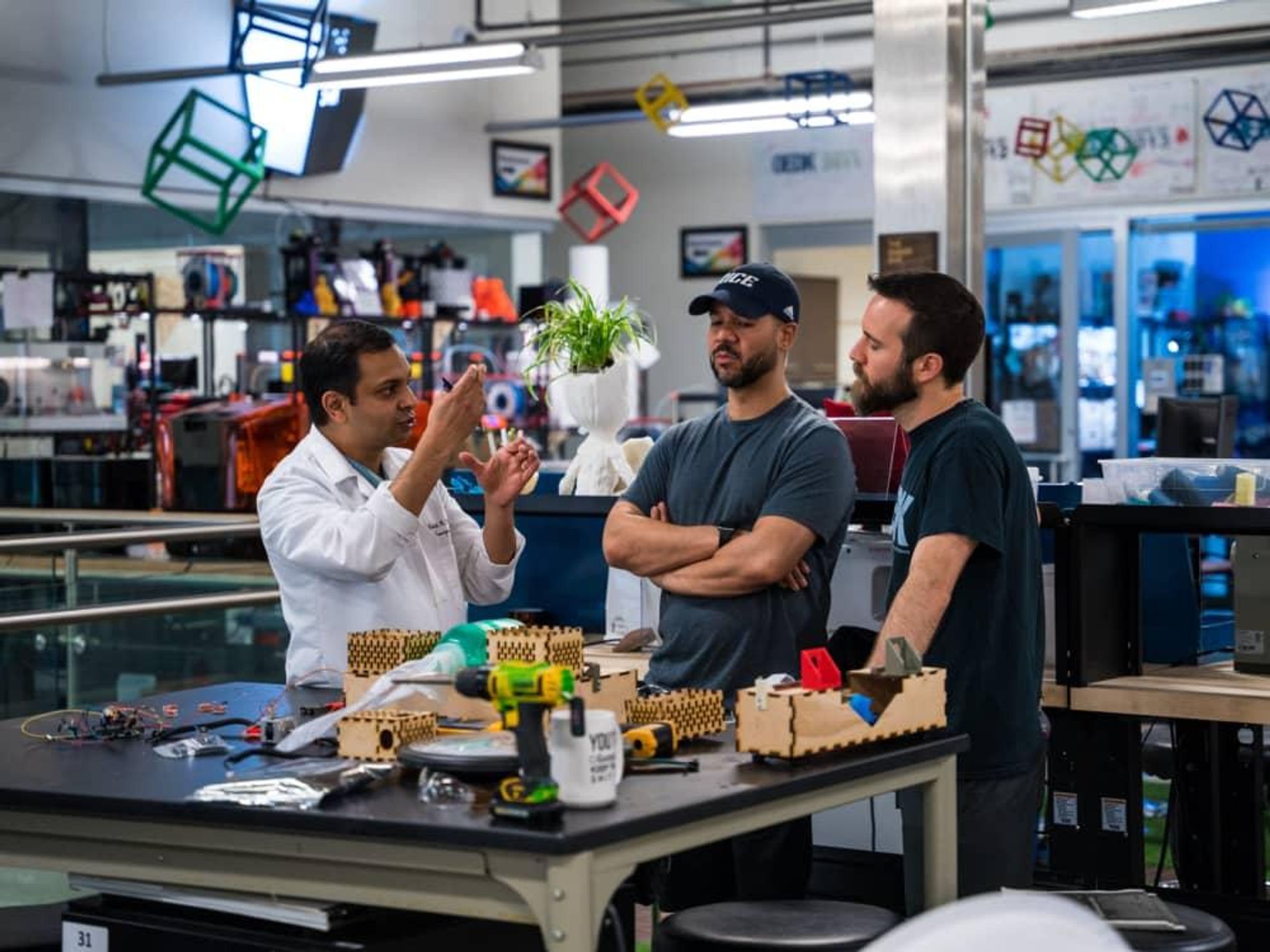rice rises again
Texas university develops innovative ventilation device to fight COVID-19

Each day, Dr. Matthew Wettergreen and the small team at Rice University’s Oshman Engineering Design Kitchen work to solve worldwide problems. Now, the deft unit, part of Rice’s Brown School of Engineering, is heeding one of the globe’s biggest calls.
With the United States, Italy, China, and most of the world in desperate need of ventilators to deal with the COVID-19 pandemic, Rice’s Design Kitchen has crafted an ingenious, and inexpensive, solution. The group conceived of, built, and tested a fully functioning, automated bag valve mask — or BVM — in less than two weeks. The Design Kitchen’s product can be built for around $300; the team plans to release design blueprints free of charge for use around the world.
The Design Kitchen, which is made up of faculty and students, is teaming up with Canadian global health design firm Metric Technologies to finalize a prototype by the end of the month.
What is a BVM? Quite simply, it’s a hand-held device commonly used by medical professions (especially emergency techs) to provide ventilation to patients who are not properly breathing. A hand-held BVM requires manual force and can only last as long as the human operator can manage — usually minutes. An automated BVM, however, can last for hours at a time.
“It’s automatic, electric, and works independently of a tech,” Wettergreen, a professor in the department and member of the Design Kitchen team, tells CultureMap. “It’s not designed for people who are critical cases, but rather who are in respiratory distress.”
That delineation is important: The automated BVM would take less-critical patients off ventilators and free them up for those in dire need. The benefit could be a game-changer for those on the front lines of the COVID-19 battle. “That’s our hope,” Wettergreen notes.
Another game-changing facet: the simplicity of design. With no heavy manufacturing assembly lines needed, the Design Kitchen’s prototype can be built in hospitals or temporary facilities, and it can be fashioned by anyone who is tech-literate, who understands mechatronics, and can follow its open-source instructions.
The design has caught the attention of the Department of Defense, which may authorize the Navy to utilize it in the near future. It’s a huge feat for the small unit, dubbed the Apollo BVM team, whose students worked around the clock and took classes online in order to deliver the project as soon as possible.
The Apollo name is apropos: Dr. Rohith Malya, an assistant professor of emergency medicine at Baylor College of Medicine, an adjunct assistant professor of bioengineering at Rice, and a principal at Metric Technologies, coined the name as a tribute to Rice’s history with NASA and President John F. Kennedy’s now-famous speech kicking off the nation’s efforts to go to the moon.
“When a crisis hits, we use our skills to contribute solutions,” says Wettergreen. “If you can help, you should, and I'm proud that we’re responding to the call.”
